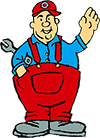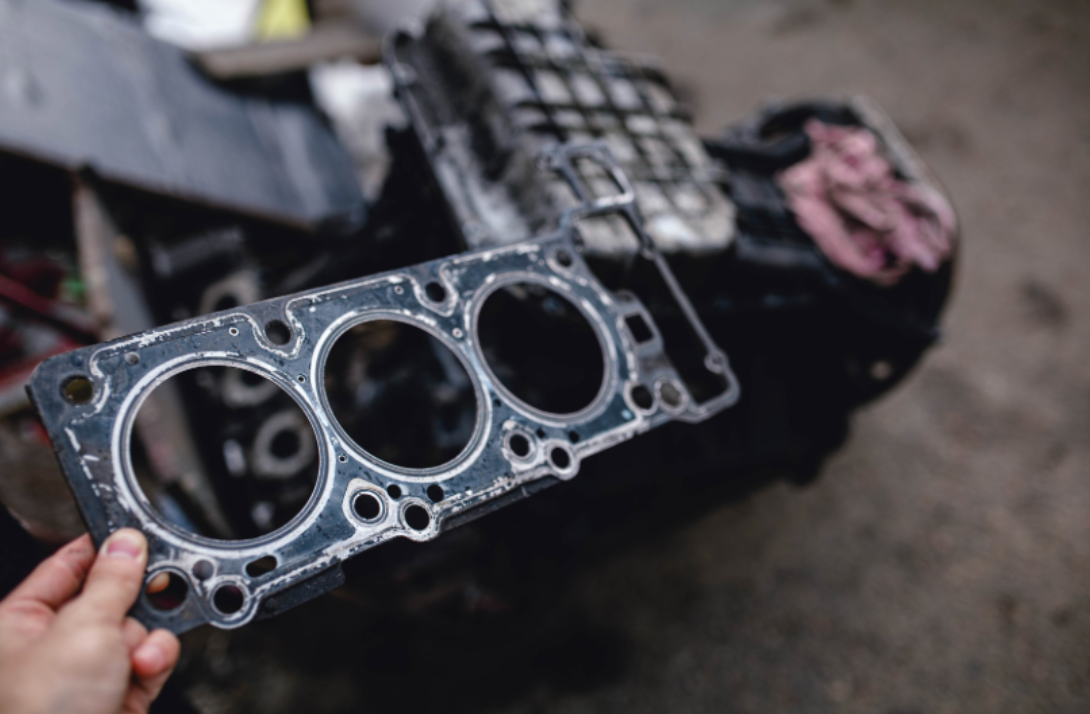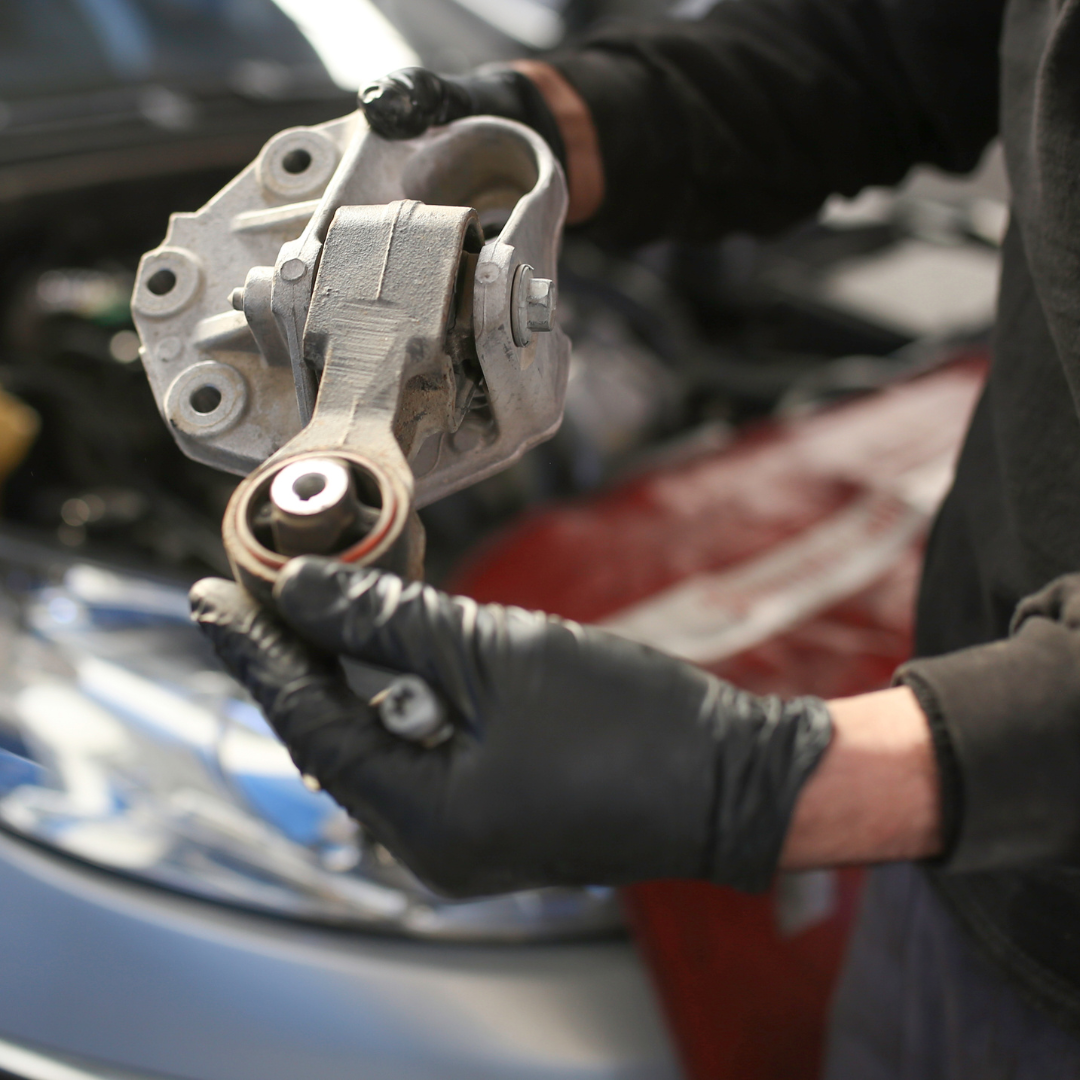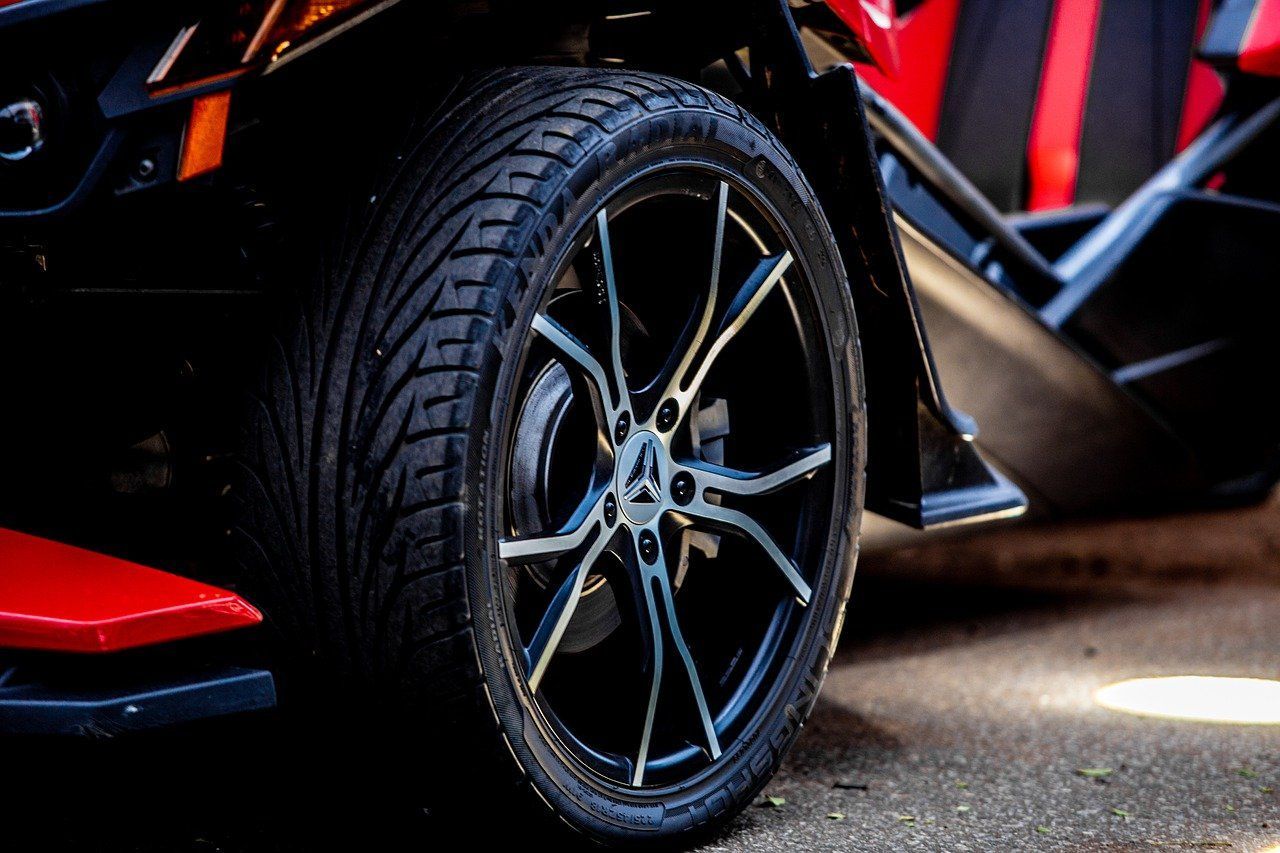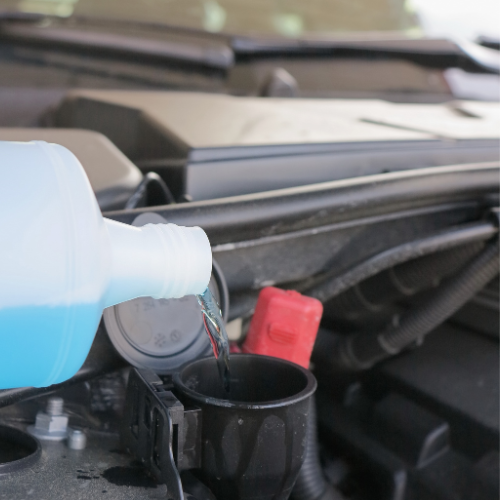Is It Time to Rotate and Balance Your Tires?
Walt’s Auto Service has you covered.
Happy October! October marks National Tire Care Month, and at Walt's , we prioritize your safety and vehicle longevity. Your car is a considerable investment, and maintaining its tires ensures you stay on the road for the adventures ahead. With winter right around the corner, it's the perfect time to visit Walt's for a comprehensive tire check before embarking on those dreamy spring and summer drives.
So, what comes to mind during National Tire Care Month? It's about ensuring smooth rides, regular tire rotations, pressure checks, and alignments. And, of course, feeling that confidence on the road, knowing the dedicated team at Walt's Auto Service has your back. After all, regular tire maintenance ensures not just a smoother ride but also those show-stopping moments at car exhibitions. So, let's keep rolling and enjoying the journey!
When should you replace your tires?
Everything has an expiration, including the tires on our vehicles. Regularly updating your tires is essential for maintaining your vehicle's optimal performance. So, when is the right time to make that switch?
Treadwear
Tire tread wear is a primary sign that it's time for a tire replacement. Tread refers to the patterned grooves on the tire's surface, which are pivotal in ensuring traction on diverse road surfaces and under varying weather conditions such as rain, ice, and snow.
The rubber may harden and develop cracks with age and use, and the tread will inevitably thin out. This deterioration can compromise your vehicle's braking and handling, increasing the risk of flats or blowouts. So, how can you determine when the wear on your tire treads necessitates a replacement? There are several techniques to consider!
The penny test. You likely have a slight change rattling around in a cup holder in your car. If you do, you can perform a simple test to check the wear on your tires. Take a penny and place it vertically in between the tread grooves on the tire, with Lincoln's head facing down. Then, kneel down level with your tire and see how much of the penny is covered. If Lincoln's head is completely visible, then your tread is too worn, and you'll likely need new tires.
The quarter test. You can perform a similar test with a quarter if you don't have a penny. Following the exact instructions, see if the tread touches Washington's head. If it doesn't, it's time to look at replacing the tires.
Tire tread wear bar
If you don't have any change on hand, or if you only have nickels and dimes, all tires should come with their wear indicator, called the "tire tread wear bar." This is a little strip of rubber that runs perpendicular to your tread and can usually be found in the bottom of the tread groove. If these bars are even with the surrounding tread, this indicates the need to replace your tires.
Flats and punctures
If you find that your tire is completely flat and there is a giant hole in it, the solution is simple: Replace the tire. However, not all flats are the same or as obvious, and the way you deal with it depends on how it got that way in the first place. If you suspect you might have a leaky tire, there are a few ways to be sure.
First, inspect the tire for any obvious signs. This could be a nail or any other sharp object protruding from the tire. While a nail in your tire doesn't necessarily mean that it has punctured the inner tube and caused a leak, removing it is usually a good idea.
With a pair of pliers or a claw hammer, remove the nail. Many tires will try and self-seal, but you should still have a plug on hand. You can drive with a nail in your tire for a short distance, but it can be dangerous. Simply hitting a curb or a bump could drive the nail in further and possibly cause a blowout.
If the puncture isn't obvious, further testing may be required. For this, you'll need a bucket of soapy water and a brush. Alternatively, you can mix such a solution in an empty spray bottle. The objective is to coat the surface of the tire with the mixture and look for soapy bubbles to form as the air escapes.
If you identify the leak's source (or sources), highlight them using duct tape, a metallic marker, or another conspicuous marking method. This assists tire technicians in pinpointing the problem swiftly. If the leak is severe enough to make driving risky, stow the compromised tire in your trunk and switch to your spare. This will allow you to reach a tire repair facility safely, or you can transport the tire using another vehicle.
A leak doesn't always necessitate a tire replacement. If the tread remains intact, many tire centers can fix the issue. Nonetheless, delaying repairs on any puncture or hole is inadvisable, no matter how minor it appears.
Routine tire maintenance: How to get the most out of your new tires
So, you've acquired some new tires for whatever reason. How can you ensure you maximize their potential? Let's explore.
Check and maintain tire air pressure
First and foremost, you need to make sure that your tire pressure is adequate. If your tires are overinflated, it causes the center tread to wear at a different rate than the tread on the outer part of the tire. Of course, this means you'll likely have to replace your tires more frequently, and could result in poor traction and an altogether less comfortable ride.
However, if you don't have enough air in the tire, you might have too much of the tire making contact with the road. The excess friction can cause issues with your gas mileage and, again, cause the tread to wear more quickly.
This is a function of both the tire and the vehicle. With a tire pressure gauge, you can remove the cap and check the pressure (in pounds per square inch, or PSI). But how do you know what the correct PSI for your tire is? There are a few ways you can check.
On the tire. The first and most obvious place to check for the recommended tire pressure is on the tire itself. You can usually find this on the side of the tire, typically below the manufacturer's logo. It will say something along the lines of "Max.Pressure 30 PSI."
However, it's worth noting that this is typically the maximum allowable pressure - not the pressure that is necessarily the best for your vehicle.
It's a good idea to check your tire pressure frequently. If you notice that there is always a substantial drop in pressure, it might be necessary to inspect the tire for leaks and possibly replace them. Checking them once a month is a good idea, but consider checking the pressure each time you're fueling up at the gas station. Additionally, before you go on a road trip or any long drive, make sure your tires are aired up.
It's also worth noting that not every car has 4 identical tires. This means it is possible that you need different tire pressures for the front and back. Again, consult your owner manual for specific details.
Rotate your tires
Rotating your tires is a simple way to increase the lifespan of your tires by making sure that they wear more evenly over time. As you can imagine, your tires wear differently based on where they are located in the car.
For example, a front-wheel drive car uses the front tires to generate power and propel the car forward, so they naturally wear faster than the rear wheels. Similarly, the rear tires in a rear-wheel drive vehicle will do the bulk of the work and will likely wear faster than the front.
Because tires wear differently based on the type of vehicle you have, there are different methods or rotation patterns you should consider when rotating them.
Front-wheel drive vehicles. Remove the front tires and place them in the rear position on the same side. Take the rear tires and place them in the front position of the opposite side. For example, the right front tire should rotate to the right rear position, and the left rear tire should go to the right front position.
Rear-wheel drive vehicles. For rear-wheel drive vehicles, the process is similar to the rotation pattern for front-wheel drive vehicles but inverted. Take the rear tires and place them in the front position on the same side. Then, take the front tires and place them on the opposite side in the rear position. For example, your right rear tire should rotate to the right front, and your left front should rotate to the right rear position.
All-wheel drive vehicles. For all-wheel drive vehicles, simply rotate in a crisscross pattern. In other words, your left front should go to the right rear, and the right rear to the left front, and so on.
Of course, not all cars have the same wheel and tire size for all four positions. For example, some high-performance sports cars have wider tires in the rear for extra traction. In such a scenario, you obviously can't rotate the rear tires to the front position, or vice versa, so rotating your tires might not be possible.
Additionally, some high-performance tires are unidirectional, meaning they are only designed to spin in one direction. These tires cannot be rotated simply by moving the wheels; instead, they must first be taken off of the wheel completely and placed back on in the correct orientation.
If you're uncertain whether your vehicle is front, rear, or all-wheel drive, consult your owner's manual for clarification. While rotating your tires is certainly something you can do at home, it's always best to consult a professional shop if you have any questions or concerns about the process.
Either way, in order to get the most out of your tires, it is recommended that you rotate them every 3000-5000 miles or every six months. A good way to remember this is to rotate them every time you change your oil.
Balance your tires and wheels
The idea of balancing your tires is to make sure that it has an even distribution of weight around the entire tire. If the weight is out of balance, it causes the tire to wobble slightly, which can result in uneven tire wear, vibrating steering wheels, and a bumpy ride in general. If you notice any of these symptoms while driving, especially as you increase your speed, then you probably need to have your tires balanced.
Fortunately, balancing a tire is a relatively painless process, but it needs to be done carefully and precisely. For this reason, it's usually something you'll need the help of a tire shop to do.
The shop will remove the wheel and place it on a special machine that spins the wheel and tire so that it can measure whether or not it is balanced, how much it is out of balance, and where. Then, they simply attach small weights to the appropriate area, usually in small increments, like half an ounce.
Because the tire and wheel have to be removed to be properly balanced, this is usually a process that is done when you're either getting new tires or having your tires rotated. So, the next time you're getting new tires or having them rotated, ask your technician to balance them, too.
Get a tire and wheel alignment.
If you've ever noticed that you must hold your steering wheel at an angle to keep your car moving straight, you likely have experienced alignment issues. Other indicators may also include steering wheel vibration, a tendency for your vehicle to pull left or right, and, unsurprisingly, uneven tire wear.
As you can imagine, a vehicle out of alignment can be dangerous. It can make driving much more complex and puts you at risk of a blowout. For this reason, if you notice any of the symptoms outlined above, it's essential to take your vehicle to the shop for alignment.
So what exactly is a "tire alignment" anyway? Although it is referred to as a tire alignment, it actually refers to the angle at which your wheels and tires are connected to your vehicle's suspension system. An alignment corrects three main angles: camber, caster, and toe (for a more in-depth look at these terms, check out this helpful diagram ).
In general, these terms refer to the various angles of your tire with respect to the body of your vehicle and the steering axle. Any one of these can make it challenging to steer and will undoubtedly cause uneven wear on your tires. When a technician performs an alignment, they are correcting these angles, ensuring that the tires are properly oriented with the car and the road.
While a vehicle can slowly lose alignment over time simply due to normal use, the most significant alterations occur after you get new tires, replace parts of the suspension, get in an accident, or after any other major impact (like hitting a giant pothole).
As you can imagine, aligning your tires is an complex process that requires special machinery and computers. For this reason, you will almost certainly need to take your vehicle to an experienced professional shop with an alignment machine.
Walts Auto Service is a great place to be when you need auto repair services with great auto mechanics you can trust. Over the years, our ethics of honesty, trust, and integrity are what make us one of the most reliable auto repair shops in Torrance and the surrounding areas of Hermosa Beach, Redondo Beach, Manhattan Beach, Palos Verdes, Hawthorne, Carson, Lomita, and Gardena! We are AAA certified and proud to provide you with the best in-house and nationwide 3-year/36,000-mile warranty in the South Bay area. When you need a steady hand, an eye for detail offered with straight, honest talk, bring your car into Walt’s Auto Service.
Book an appointment or give us a call! We are located at 340 Van Ness Ave, Unit A, Torrance, CA 90501.
